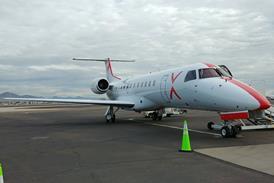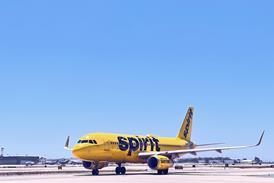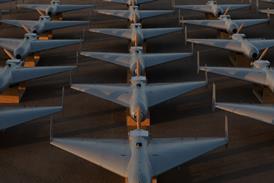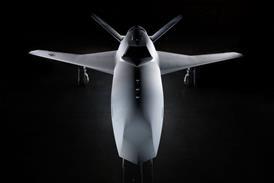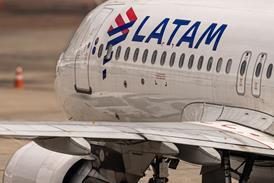Can corporate aviation be relied on to police its own affairs? European operators believe it can, and point to an impressive safety record as evidence
Business aviation groups in Europe and the USA like to point to corporate aviation's impressive safety record. US safety analyst Robert Breiling reveals that business jets and turboprops have fewer accidents than other forms of aviation. The reasons for this high standard are varied, but it looks likely to be rewarded with a lighter regulatory touch in Europe as the continent's new airworthiness body reviews rules for the sector.
The European Aviation Safety Agency (EASA) plans to extend its scope from aircraft certification to regulation of pilot licensing, air operations and third-country aircraft. In its initial draft proposals, published in December last year, the agency foresees corporate aviation being given a relatively free rein, with adherence to international standards replacing national certificates.
Safety first
Currently each national aviation authority (NAA) regulates corporate activity differently and, rather than reinforce the status quo at a European level, EASA is setting a more ambitious path and one that could place it on a collision course with conservative national governments. The agency is proposing that corporate operators use their existing safety culture to avoid some of the bureaucracy involved in qualifying for an aircraft operator's certificate (AOC) designed for airlines.
The European Business Aviation Association (EBAA) says such self-regulation is possible because business aviation is a safe industry. Historically, corporate aircraft operators have compiled the best safety statistics of any segment of general aviation. In the USA, where comparisons by different operational regimes are possible, the fatal accident rate for corporate aircraft flown by a crew, such as flight departments, is 0.014 per 100,000h – nearly identical to that of the large airlines (0.012/100,000h) and better than that of commuter airlines and air taxis. Put large and small airlines together and corporate aviation comes out on top. EBAA chief executive Brian Humphries says this is because most operators fly to airline-led Part 121 standards, but place more emphasis on recurrent training for pilots and maintenance technicians and earlier avionics upgrades.
The idea of self-regulation sounds radical to many European governments, however, as many are used to the AOC being the only way to control the safety of aircraft operations. But Claude Probst, EASA rulemaking director, says that rather than mandate its own quality system, the agency considers existing quality control measures such as the International Standard for Business Aircraft Operations (IS-BAO) to be sufficient. Under draft rules, business aircraft operators would have an obligation to have systems in place to ensure safe operation. IS-BAO is a voluntary code of best practice drawn up by the International Business Aviation Council, but under the EASA proposal, any operator would have to be audited by a third party or risk inspection from authorities.
A change in rulemaking systems has led to this shift in thinking. This in turn has led to a proposal that more than one country is likely to oppose. Under EASA's predecessor, the European Joint Airworthiness Authorities, decisions were made by a committee, with unanimity required to pass any rule change.
The result was sluggish progress. Hence, rules covering the operation of commercial air transport, similar to Part 121 of US Federal Aviation Reegulations, have been in place under the first chapter of the European Joint Aviation Requirements for Operations (JAR Ops 1) for decades, as have rules on commercial helicopter flights under JAR Ops 2.
Europe lacked coherent rules mirroring US FAR Part 91 for private aircraft and Part 135 for ad hoc charter operations. Working groups in the JAA looked at corporate aviation under draft JAR Ops 2 rules and aerial work under JAR Ops 4, but political obstacles kept the drafts on the backburner.
The corporate aviation logjam, as well as frustration over the lethargic JAA process, prompted European Union countries to create EASA. JAR Ops 2 and 4 are the first areas the agency is set to tackle, not least because business aviation associations have lobbied for rule change for several years.
Good regulation
The EBAA met its US counterpart, the National Business Aviation Association, and manufacturers and operators in March last year and established the industry working group on business aircraft operations (IWG-BAO) in a bid not to be overlooked in the establishment of the new agency. IWG-BAO officially reports to the 41-country European Civil Aviation Conference (ECAC), but in reality its focus is EASA, since non-EU members of ECAC are likely to follow the core members' rule changes. Humphries says: "We're very keen to work with the regulators, like in the past on JAR Ops 2 drafting, and we want to help them get a good regulation for all aviation."
IWG-BAO will present its findings at next week's European Business Aviation Conference and Exhibition in Geneva, and is likely to call for different rules for corporate aviation on flight-time limitations, on-board security and essential equipment, says Humphries. These are broadly in line with EASA thinking, says Probst.
The core of the new draft rules is the definition of aircraft operations as either commercial or non-commercial. Commercial is defined as any "remunerated aeronautical activity" where the customer is not the aircraft owner. Therefore, air taxi and ad hoc charter would be considered as commercial activity, subject to JAR Ops 1. Humphries says that, if corporate aircraft are to be free from the constraints of AOCs, loopholes should be closed to prevent them being used for hire-and-reward to prevent them gaining a competitive advantage over air-taxi operators.
But moving to a system where operators adhere to a "recognised quality standard" such as IS-BAO, where NAAs have no direct input, is at odds with many countries' view of big government and its desire to regulate every sphere of life.
There is also the thorny issue of job losses within the NAAs, which would see their roles reduced to making random ramp checks. This less-prestigious task will require fewer staff in countries where civil servants' jobs are protected. Probst foresees difficulties in pushing the proposals through and EASA will lobby transport ministries directly and through the business aviation community before December's meeting of EU transport ministers, when they will be presented with a draft drawn up by the EC acting on EASA advice. This proposal will then face European Parliament scrutiny, where lobby groups often help to iron out any politically inspired creases, Humphries says.
Persuasion
If, as expected, the draft rules for non-commercial operations based largely on JAR Ops 2 work are adopted, they will come into force by 2007 as CS Ops 2 (Community Standards for Operations). But there is another questionmark for the business aviation community over the position of fractional ownership operations.
At present, different countries regulate fractionals differently. There is a common assumption, however, that the sector constitutes public transport, since there is not a single owner. EASA has challenged this assumption, likening owning one-eighth of an aircraft to owning one apartment in a block. Just as the owner of the flat may subcontract building management to a third party, he is ultimately responsible for meeting safety standards in that apartment. Similarly, although fractional owners will not manage the aircraft directly, by signing a contract with an operator, they are adopting the systems of that operator.
In the USA, the FAA views fractional schemes as non-commercial, regulating them under Subpart K of Part 91. Probst says the agency has "an obligation to keep differences [between the authorities] to a minimum", signalling an intention to use Subpart K as the basis of European fractional-ownership operating rules. Since most fractional schemes use heavy jets, or complex aircraft, it is likely that the rules for operation will not be that different from JAR Ops 1, albeit with self-regulation.
There is an indication that fractionals would welcome self-regulation. NetJets Europe recently underwent the International Air Transport Association's operational safety audit (IOSA), one of only 14 European aviation firms and 32 airlines globally to have achieved the IOSA standard. David Marcus, Lisbon, Portugal-based NetJets Europe chief operating officer, says the company aims "not to reach safety standards, but to surpass them".
It will be up to the industry to present the EASA proposals to their own countries' regulators ahead of December's meeting. The hope is that despite reservations over potential job losses, European governments can be persuaded that corporate aviation can be trusted to police its own affairs, as it has shown itself willing to do in the past.
JUSTIN WASTNAGE/LONDON
Source: Flight International


